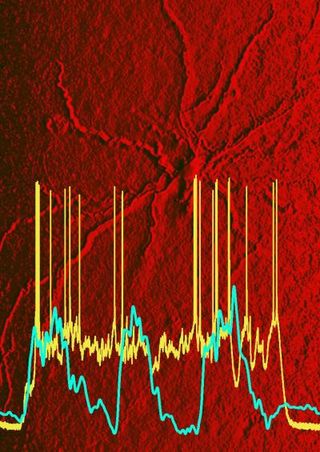New Clues to How Memories Are Made During Sleep

While parts of the brain power down during sleep, other regions stay turned on, replaying the day's events and cementing memories.
Previous research suggested that this critical memory-making process depends on the hippocampus, sometimes called the old brain, communicating with the neocortex during sleep. But a new study shows the main interface between those two regions — the entorhinal cortex — also plays an important role in memory formation.
Mayank Mehta, a professor of neurophysics at UCLA, and his team examined these three brain regions in mice. They found that the entorhinal cortex showed what is called persistent activity even while under anesthesia. In humans, persistent activity is thought to mediate working memory while we're awake, such as when we concentrate on remembering directions or phone numbers. So the researchers were surprised to see such activity while the mice were knocked out and could not feel or smell or hear anything.
The researchers also found that the hippocampus was not driving this process, as had been previously assumed.
Mehta's team used a sensitive monitoring system to measure the activity of single neurons in the brain, which allowed them to see how activation in the different regions spread. They found that activation in the neocortex triggered the persistent activity in the entorhinal cortex, which continued even when the neocortex became inactive. And the persistent activity in the entorhinal cortex, in turn, sparked activity in the hippocampus.
"This suggests that whatever is happening during sleep is not happening the way we thought it was," Mehta said in a statement. "There are more players involved so the dialogue is far more complex, and the direction of the communication is the opposite of what was thought."
New information about the role of the entorhinal cortex could be helpful to scientists studying Alzheimer's disease, which starts in that part of the brain, the researchers said. The study was published online Oct. 7 in the journal Nature Neuroscience.
Sign up for the Live Science daily newsletter now
Get the world’s most fascinating discoveries delivered straight to your inbox.
Follow LiveScience on Twitter @livescience. We're also on Facebook & Google+.
